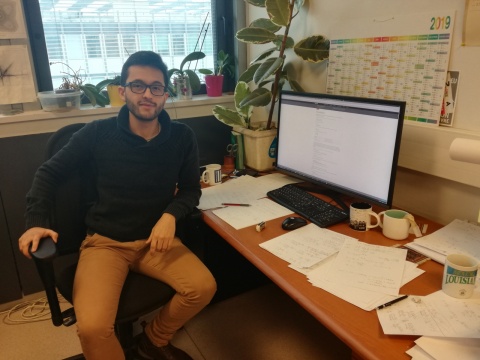Secondment to the Sorbonne University
Gabriel Morgado, NaMeS PhD student, participated in the secondment to the Centre National de la Recherche Scientifique (CNRS). The objective of the secondment was twofold. First, Gabriel and research team in Paris completed first project on the scaling of Turing patterns. This work has been published (Scaling of submicrometric Turing patterns, Phys. Rev. E, 98, 032213, 2018) and was also communicated with an oral presentation at the 31st International Symposium on Rarefied Gas Dynamics, hand in hand with a publication in AIP Conference Proceedings. They developed a new method able to tune the wavelength of a Turing pattern down to the nanoscale. They showed the theoretical feasibility and the broad application in chemical engineering. They also presented these results in a French national workshop JTMS 2018: Journées "Théorie, Modélisation et Simulation" with a poster.
The second project of the secondment was about chemical wave fronts of Fisher-KPP type. They consider the autocatalytic reaction A + B -> 2A and look for diffusion-induced perturbations of the front profile. This research project is divided into two parts: the first part, completed in Paris, refers to the deterministic study of such system. An article has already been written and will be submitted soon. The second part will be done in Warsaw and is devoted to the study of the same system but with fluctuations. Research team will look at the microscopic scale solving the associated master equation using a Gillespie algorithm. Eventually, they will compare the results obtained in both approach.
Finally, for the next secondment, we are preparing a new project that should start around end of 2019 on fluctuation-induced perturbations on reaction-diffusion systems with complex diffusive behaviors.
Dates
7 Apr., 2018.- 5 Nov., 2018
Location
Sorbonne University, Laboratoire de Physique Théorique de la Matière Condensée (LPTMC), France
Participant
Gabriel Morgado




